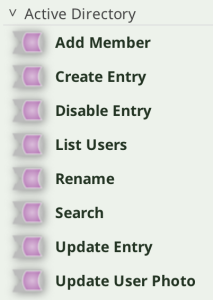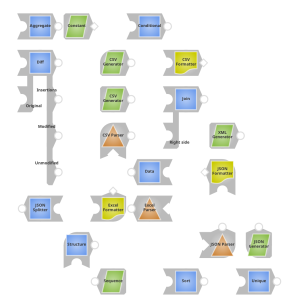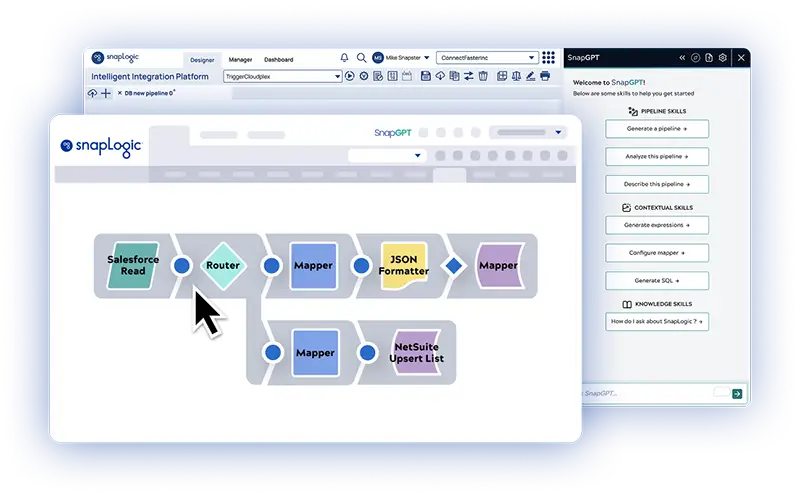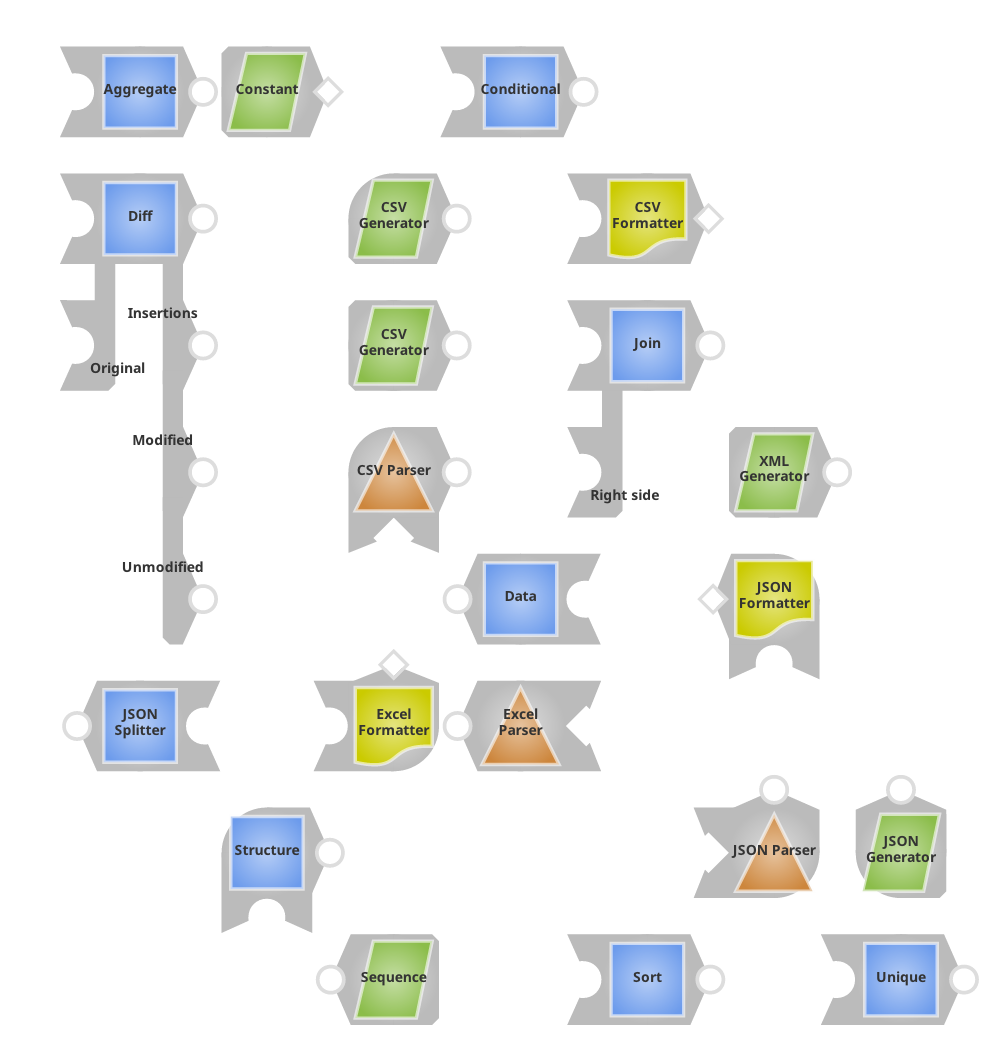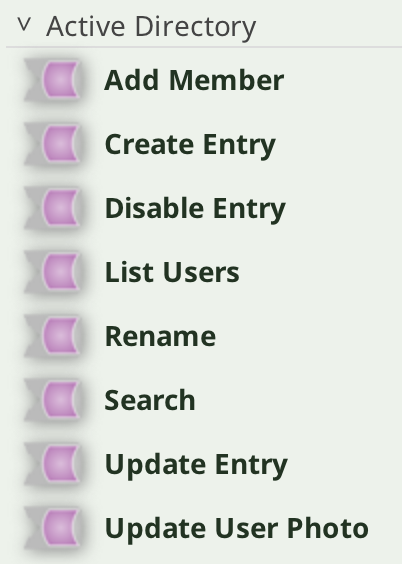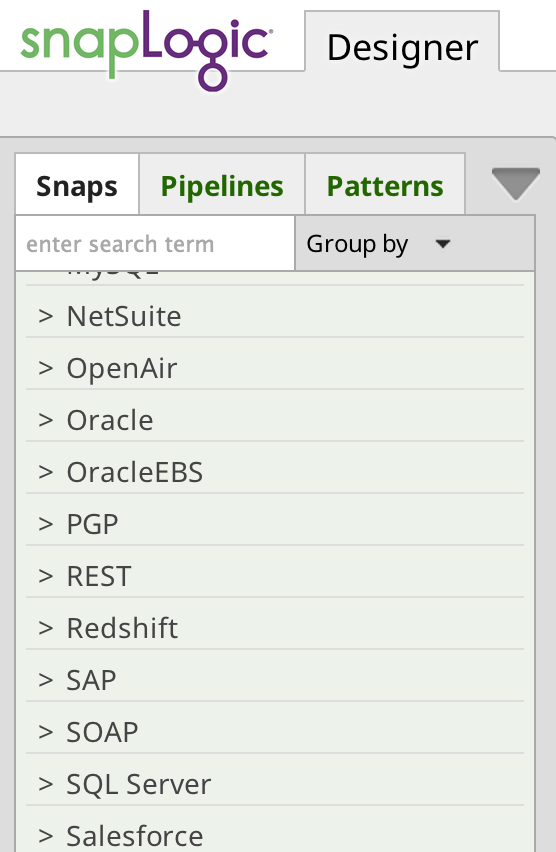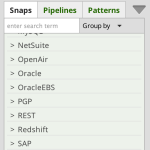 We’re always coming out with new Snaps, which are the building blocks of a SnapLogic pipeline. Snaps perform a single function such as read, write, or acting on data. They are found in the Snap catalog, accessible on the left hand side of Designer. Simply drag a Snap from the Snap catalog onto the workspace to use it in a pipeline, which is a data flow. Snaps are classified as either Core Snaps, meaning that they are available to all customers, or by the Snap Pack for particular applications, technologies or utilities. We also have a Snap SDK for customers and partners to build their own custom Snaps.
We’re always coming out with new Snaps, which are the building blocks of a SnapLogic pipeline. Snaps perform a single function such as read, write, or acting on data. They are found in the Snap catalog, accessible on the left hand side of Designer. Simply drag a Snap from the Snap catalog onto the workspace to use it in a pipeline, which is a data flow. Snaps are classified as either Core Snaps, meaning that they are available to all customers, or by the Snap Pack for particular applications, technologies or utilities. We also have a Snap SDK for customers and partners to build their own custom Snaps.
Application and Database Snaps
Here is a list of Snap Packs from A-Z. Note that this list is always growing as we introduce new Snaps every few weeks. Each Snap Pack contains many Snaps. For example, here’s a screenshot of what’s in the Active Directory Snap, which was released in May 2014.
- Active Directory
- AWS (Account Creation, EMR Executor, Hive Executor)
- AWS Redshift
- Birst
- Box
- Eloqua
- Flurry
- Foursquare
- Google Analytics
- Google DFA
- Google Directory
- JIRA
- Microsoft Dynamics AX
- Microsoft Exchange
- Microsoft SQL Server
- MongoDB
- MySQL
- NetSuite
- OpenAir
- Oracle RDBMS
- Oracle EBS
- PGP
- SAP
- Salesforce
- ServiceNow
- Tableau
- Trillium
- Vertica
- Workday
- Zuora
Technology Snaps
- Hadoop (HDFS Reader and Writer)
- JDBC
- JMS
- LDAP
Core Snaps
Core Snaps are available to all customers with the SnapLogic Elastic Integration Platform. They include the following Snap Packs: Binary, Email, Fixed Width, Flow, REST, Script, SOAP, Transform and XML. Here are examples of Core XML Snaps in the Snap Pack:

Here are examples of SnapLogic Transform Snaps:
For more information on SnapLogic Snaps, be sure to visit our SnapStore and you can learn more about the key concepts in this post. Here’s a demonstration of the SnapLogic Elastic Integration Platform in action to help you get a better understanding of Snaps, Pipelines, Patterns as well as our Monitoring Dashboards.



